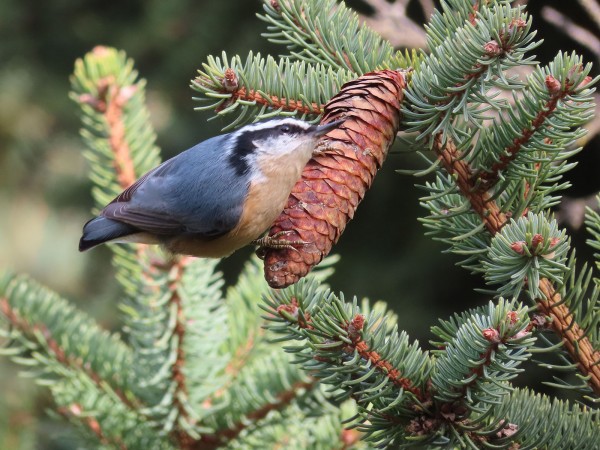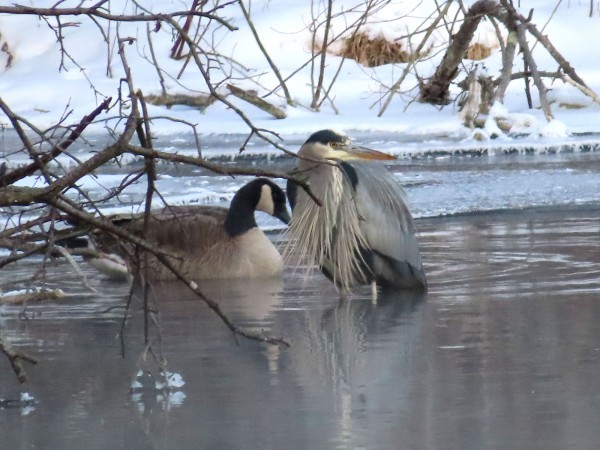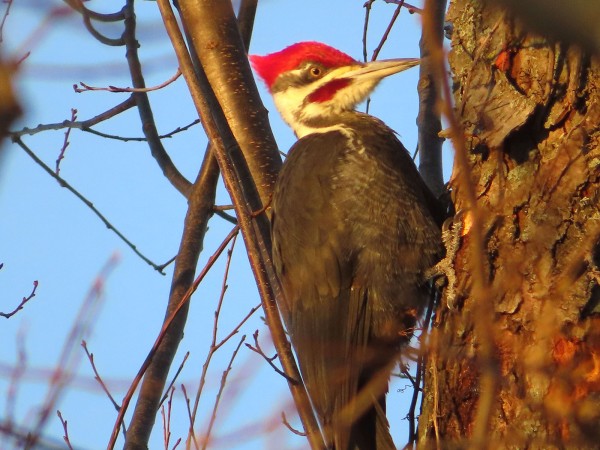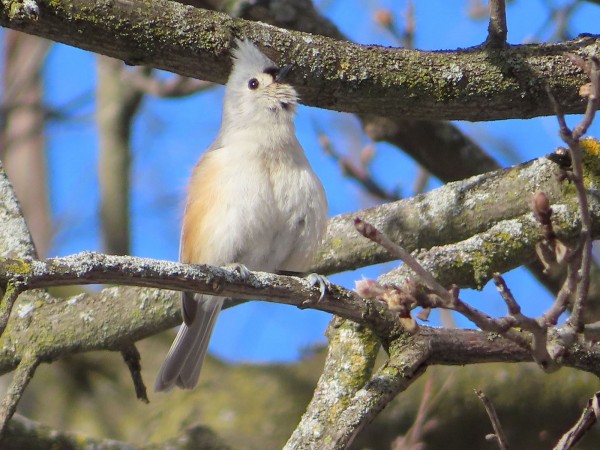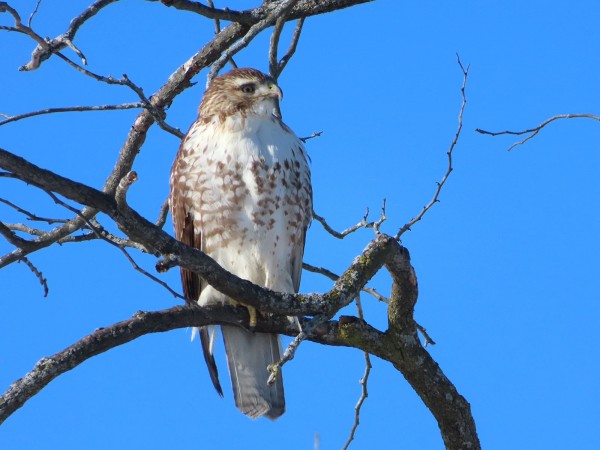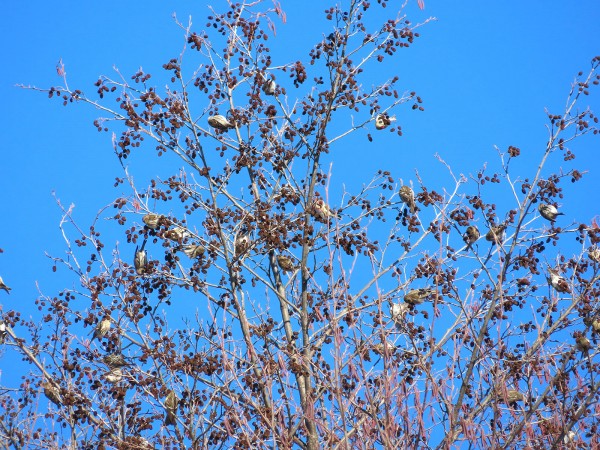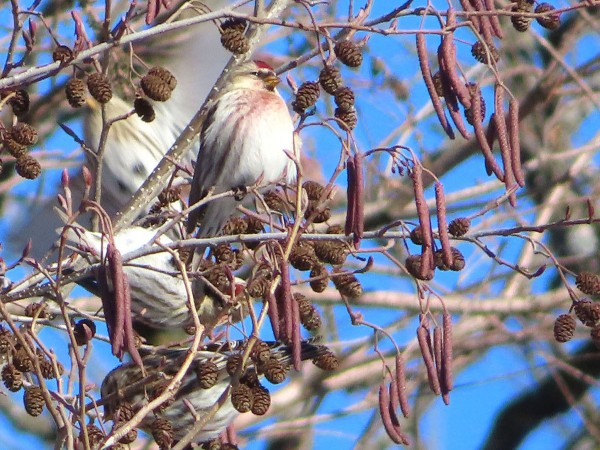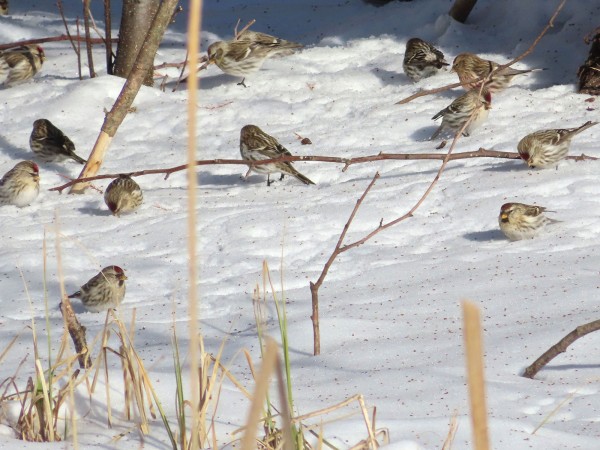Chuck's Birding Report #96
11 January - 17 January 2022
Dear fellow flock of birders,
The best places to bird in the Arb in the winter are around the periphery where the birds can go to feeders of home owners. The best Arb location is at Spring Trail Pond, aka the Duck Pond. There have been reports of 10 to 20 species in that area. Besides the common species there are Fox Sparrows, White-throated Sparrows, occasional Red-winged Blackbirds, Common Grackles, Hermit Thrushes, Belted Kingfishers, Northern Flickers, Winter Wrens and others I’m forgetting at the moment. It’s a small area so check it out.
On our walk today we went up into the Pinetum to look for the Northern Saw-whet Owl, Crossbills and Red-breasted Nuthatches. It’s been about a month since we last saw the Northern Saw-whet Owl but we keep hoping to see it again. No luck today. We haven’t seen any Crossbills yet this winter. We continue to hope that they will show up and feed on the spruce tree pine cones. We did however hear and then see a couple Red-breasted Nuthatches. They did not disappoint us. A photo is included.
In the main Arboretum birders are seeing the Great Blue Heron down at Big Spring most every day. It is at the far end of the outflow of the spring. It hangs out either on the left side or the right side. If on the left side it is partially covered by overhanging branches. If on the right side it is almost completely covered by branches. In fact it is often easier to see its reflection in the water than the bird itself. I’ve included a photo of the Great Blue Heron with a friend. I saw the Great Blue Heron jump a little after the Canadian friend goosed it. That may not be a friend after all.
On our walk in the Arb today we heard the Pileated Woodpecker calling loudly and got a glimpse of it as it flew away. I actually saw it a week or so ago and it was so busy pecking on a tree that I was able get fairly close enough to take some photos of it. Judging by the red feathers in the black mandibular bar it was a male Pileated. A photo is included.
As we walked east of Skunk Cabbage Bridge we stepped onto Arboretum Drive and walked south. There are two homes along that stretch of road that have good feeders. We usually can pick up 3-4 bird species at each home. The last home on the corner where the road turns to the west and goes up a hill is where I usually can call in a Tufted Titmouse by whistling. However in this cold weather my whistling ability is pretty pathetic. I kept working on it and finally two titmice showed up as we walked in Gallistel Woods. It’s always fun to see these perky, crested little birds. A photo is included.
We walked into the Junipers and Juniper Knoll hoping to see the Barred Owl perched high on one of the branches. It was not there. Last Friday I got lucky and it actually was perched there for a change. I got a documentary shot of the owl but there were so many branches in the way I would be embarrassed to include it in my report. Instead I pulled out a photo taken some time ago that shows a clear shot of the Barred Owl. It is included. It is a handsome bird.
About a week ago I was just finishing up my walk in the Arb when I saw a Red-tailed Hawk perched in the small dead tree between the two parts of the Visitor Center parking lot. It’s the tree that we often see American Crows in when we arrive for our bird walks on Tuesdays. It was sitting up there so proudly in the sun and turning its head from one side to another. There were several people in the parking lot outside their cars completely oblivious to the hawk so I had to tell them about the hawk right next to them. They were impressed. A photo of the Red-tailed Hawk is included.
I would like to finish my report with a series of photos of Common Redpolls. To me they have been the stars of the winter birds in the Arb at the end of last year (2021) and the beginning of this year. Normally the Pine Siskins have arrived and would be the much more numerous than the Redpolls. This year it is just the opposite. The Common Redpolls have been seen in the Sweet and Whitespire Birches just south of the Crabapple Collection as well as in the European Alders at Icke Boardwalk. The numbers have been increasing all winter. I saw a few early on and about 70 at Icke Boardwalk on January 9th. I would not have guessed that many until a hawk, most likely a Merlin, came flying in. All the Redpolls flew up in the air and that’s when I saw the huge flock. There could have been even more than 70. They eat the seeds of the female catkins in the aforementioned trees. The female catkins look like miniature pine cones and each contains about 100 tiny seeds. As they try to pry out the seeds many fall to the ground. While I watched the Redpolls up in the trees, occasionally they would drop to the ground and eat the seed off the top of the snow. The included photos show 1. A large number (25) of Redpolls feeding at the top of a European Alder; 2. One male Redpoll with a red cap and a blurry red chest along with some other nearby Redpolls; and finally 3. Several Redpolls on the ground feeding on seeds that had fallen on top of the snow.
For my last item on Common Redpolls I have attached a link to a YouTube video created by Cynthia Carlson which I think is amazing and really demonstrates how the Redpolls extract the seeds from the female catkins.
The name of the video is: A Cold Day in the UW Madison Arboretum
Here’s the link for the video: https://www.youtube.com/watch?v=wTLLeRLGH9g
Thank you Cynthia for sharing this amazing video!
That’s the bird report for this past week in the Arb.
I wish you all good health and good birding in 2022,
Chuck

